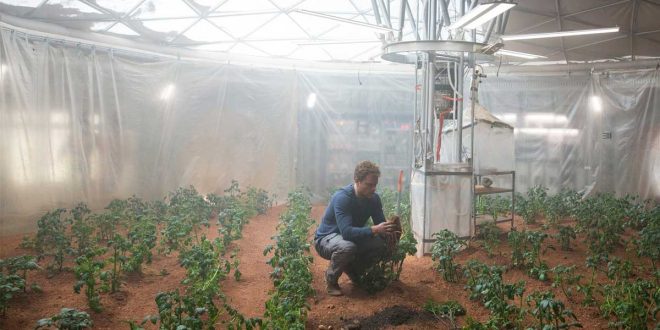A project attempting to grow potatoes in Mars-like conditions has reported positive preliminary results.
Potatoes bred by the International Potato Center in Peru were grown in a CubeSat – a miniature satellite box – developed with Nasa. The CubeSat was on Earth but hermetically sealed so that that no air or water from Earth’s atmosphere could be exchanged with the air in the box.
It mimicked the Martian day-night cycle, which is slightly longer than on Earth at 24 hours, 37 minutes and 22 seconds. The CubeSat also mimics the air pressure, oxygen and carbon dioxide levels of the Martian environment, which is unlike anywhere on Earth.
“The results indicate that our efforts to breed varieties with high potential for strengthening food security in areas that are affected, or will be affected by climate change, are working,” said CIP potato breeder Walter Amoros.
The potatoes were grown inside of a contained environment built by engineers from University of Engineering and Technology (UTEC) in Lima, based upon designs and advice provided by the National Aeronautics and Space Administration in Ames Research Center (NASA ARC), California. Inside the containers, the conditions were carefully controlled to mimic Martian cycles of day and night, such as temperature and light. Nutrient-rich water did have to be added to the environment to get the potatoes to grow, but such water and nutrients could be gathered on Mars.
The potatoes used in the experiment were not your average tubers; they were genetically bred to tolerate extreme conditions. The soil also had to be specially prepped with a loose structure to allow the tubers to obtain enough air and water to tuberize. So the crop, if grown on Mars, would have to be well-maintained. Even so, it’s an impressive find. Imagine agricultural zones on Mars, with rows and rows of potato plants.
So if having to give up french fries was your principal reason for not wanting to move to Mars, you no longer have to worry. Someday, fast-food restaurants might be as ubiquitous on Mars as they are here on Earth.
Agencies/Canadajournal
 Canada Journal – News of the World Articles and videos to bring you the biggest Canadian news stories from across the country every day
Canada Journal – News of the World Articles and videos to bring you the biggest Canadian news stories from across the country every day



